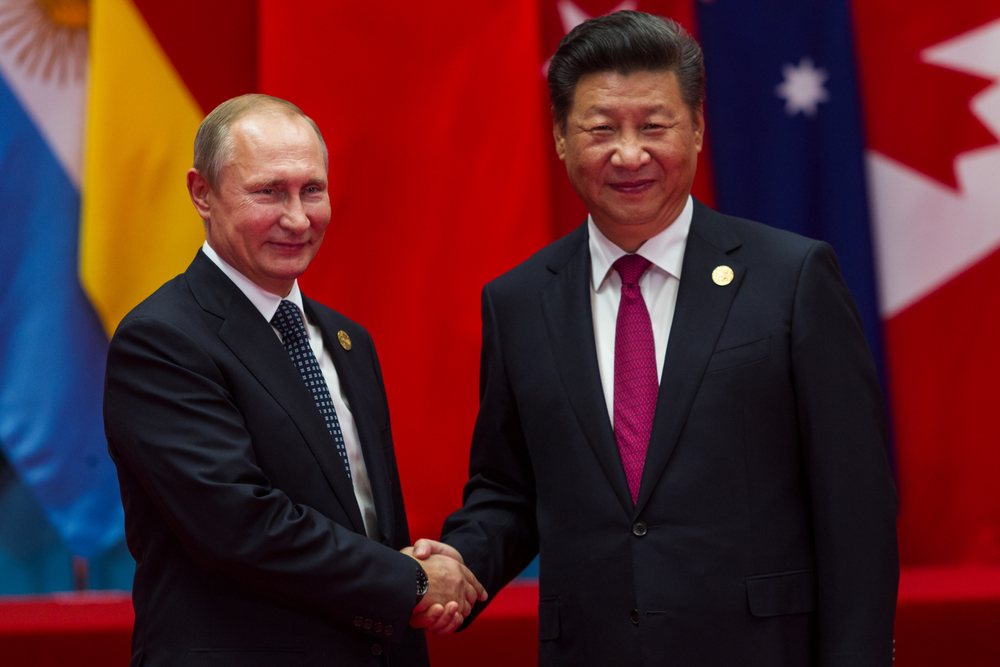The collapse of the Soviet Union 74 years after the Bolshevik revolution was supposed to herald the end of communism. Yet the People’s Republic of China lives on, 72 years after Mao Zedong famously proclaimed the founding of the PRC in Beijing. That regime is on course to outlast the USSR.
Why did one collapse and the other survive, even thrive? It isn’t because Mao and his criminal band were more moderate than Vladimir Ilyich Lenin and his coterie of violent malcontents. Ironically, Lenin viewed peace as his party’s path to power. The Bolsheviks criticized the provisional government for continuing Russia’s participation in World War I, and after seizing Petrograd accepted a dictated peace treaty from Imperial Germany.
Lenin was ruthless but practical. His initial objective was to solidify his rule rather than force a social revolution. Lenin’s New Economic Policy preserved a role for private business, and the top Bolsheviks were an eclectic mix. Only after his death did Joseph Stalin, who defeated a gaggle of rivals along the way, initiate forced collectivization and industrialization.
Even then, Soviet rule was less horrific than life in China under Mao Zedong and the Chinese Communist Party. The CCP’s consolidation of power was as terrible as Russia’s civil war. The Great Leap Forward imposed collectivization nationwide, killing more people than Stalin’s campaign, which was concentrated on extracting grain from Ukraine rather than the entire nation. And the Great Proletarian Cultural Revolution was as terrible, in its own way, as Stalin’s Great Purge or Great Terror. Mao managed to make Stalin look moderate.
However, the critical moment in the development of both nations came when the respective nation-destroyers/builders disappeared from the scene. In 1953 the ensuing Soviet power struggle centered on Lavrentiy Pavlovich Beria, who had headed the NKVD during Stalin’s paranoid purges. Beria was arrested in a palace coup with the assistance of the military. Although the political victor, Nikita Khrushchev, embarked upon a process of “de-Stalinization,” that merely represented a move back toward more normal political, social, and economic authoritarianism. Essentially, Moscow returned to Lenin and the early Bolsheviks.
Ironically, the main advocate of more radical reform—essentially ending the Cold War—was Beria. However, his death ended consideration of any significant change in political relations between the Soviet Union and the West. Nor was there any serious rethink of economic policy, despite the continued failure of central planning and collective ownership. After Khrushchev was ousted in 1964, the USSR’s internal situation worsened as the Soviet Union’s increasingly sclerotic leadership staggered on.
Leonid Brezhnev’s death in 1982 triggered a period of unstable leadership leading to the rise of Mikhail Gorbachev. The latter was a transformational figure, joining Ronald Reagan in ending the Cold War. However, Gorbachev relaxed political controls, allowing the population to give full vent to its frustrations but without making corresponding economic changes, which would have allowed people to improve their lives. Their expectations and frustrations grew along with their freedom to demand change. Equally powerful was the release of nationalistic forces long suppressed by the prospect of a visit by the Red Army. As the 1990s dawned, there was little left to hold the Soviet Union together.
In contrast, the PRC followed a more calculated path away from the Mad Mao era. In 1976 the so-called Great Helmsman, who had firmly steered his nation onto the rocks, finally departed this world. After a couple of years, the pragmatic Deng Xiaoping took charge. His strategy essentially was the opposite of Gorbachev’s, dramatically relaxing economic controls while maintaining the CCP’s tight political grip.
The first years were rocky. The Chinese people became responsible for their education, employment, and other life decisions that heretofore had been up to the state. The economic shift required massive movement of workers from unproductive collective farms to newly emerging industries. The development of private businesses in a once completely socialized economy provided manifold opportunities for corruption. Economic benefits slowly spread across China, along with resentment of overbearing and profiteering political elites.
The result was the Tiananmen Square protest movement, which involved far more than students in the center of Beijing. For instance, the men who famously tossed paint on Mao’s portrait hanging on the Gate of Heavenly Peace—and spent years in prison as a result—were workers. Given substantial party support for reform, highlighted by successive CCP general secretaries Hu Yaobang and Zhao Ziyang, both removed by Deng for their liberal views, the outcome could have been very different except for Deng’s determination to maintain party control. The brutal and bloody crackdown—unlike anything attempted during Gorbachev’s rule, even by the short-lived 1991 junta—and subsequent CCP purge preserved the regime’s authoritarian foundations.
Although discouraging anyone from staging another political challenge, the regime wielded a lighter touch than during the Mao years. The Chinese authoritarian system remained loose, with independent journalists, human rights lawyers, private NGOs, underground churches, academic exchanges, and more. A certain amount of dialogue and debate about policy was allowed so long as it was not amplified by traditional or, later, social media and critical of the CCP’s rule. In effect, there were multiple release valves to the PRC pressure cooker.
Moreover, nonpolitical life was largely left alone, with substantial access to Western products, culture, and ideas. Chinese only had to pretend to be committed to the CCP dictatorship, not, as in the past, act as if they desired state management of their lives. Perhaps most important, economic reform continued, leading to much greater prosperity. There remained sharp leftist criticism of the fairness of the resulting wealth distribution, which resulted in the rise of a neo-Maoist movement. Nevertheless, the dramatic increase in most people’s incomes, wealth, and opportunities provided a substitute form of political legitimacy for the CCP.
In short, while Chinese had to mute any criticisms of the PRC regime, they had less reason to kvetch. Surveys in China find high levels of satisfaction with the national government. Approval levels have increased in recent years. Trust even rose during the pandemic. Despite some skepticism of public surveys in an authoritarian system, anecdotal experience backs these results. Even students who dislike specific policies, such as internet controls, are highly nationalistic and profess support for the government.
Of course, China faces substantial challenges. The PRC’s economic foundation is uncertain and the regime is reversing some reforms, which may further slow growth. International challenges are mounting as Xi’s foreign policy has trended confrontational, à la “Wolf Warrior Diplomacy.” The regime has increasingly taken to micromanaging people’s lives, never a crowd-pleaser. Political opposition to Xi Jinping lurks in the shadows. Once he goes, China might again change radically.
Despite the hope of many in the West when China emerged from the Mad Mao era, the CCP is likely to outlast its Soviet counterpart. Mixing smart economics and cruel politics has helped Beijing avoid a Soviet-style collapse. However, nothing is forever. The communist regime’s resilience is likely to be tested in many other ways in coming years. Then the world may learn if the CCP is also fated to end up in history’s infamous trash bin.

